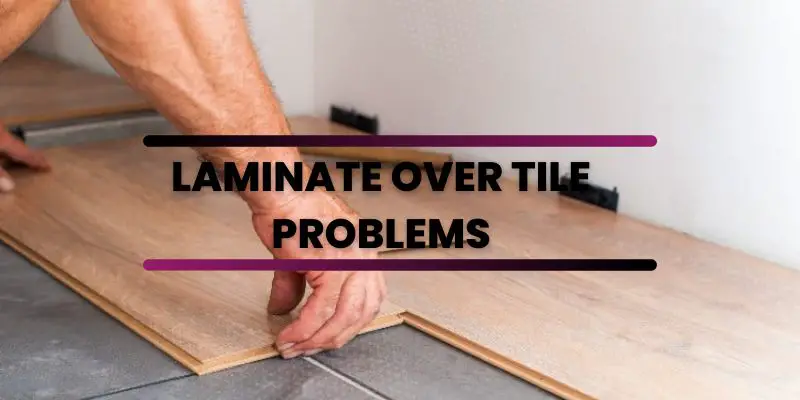Laminate flooring is a popular option for homeowners who want the look of hardwood floors without the high cost or maintenance. However, installing laminate over tile can present some challenges that homeowners should be aware of. In this guide, we will discuss the most common laminate over-tile problems and how to address them.
Uneven Tile Surface
One of the biggest problems with installing laminate over tile is that the tile surface may be uneven. Laminate flooring needs a smooth, even surface to be installed properly. If the tile surface is not even, it can cause the laminate to warp or buckle over time.
Solution: Before installing the laminate, you will need to level the tile surface. You can do this by filling in any low spots with a self-leveling compound. This will create a smooth surface for the laminate to be installed on.
Grout Lines
Another issue with installing laminate over tile is the presence of grout lines. Grout lines can create an uneven surface for the laminate to be installed on, which can lead to warping or buckling over time.
Solution: One solution is to fill in the grout lines with a floor leveling compound. This will create a smooth surface for the laminate to be installed on. Another solution is to install an underlayment over the tile, which will create a barrier between the tile and the laminate.
Moisture
Moisture can also be a problem when installing laminate over tile. If moisture seeps through the grout lines, it can cause the laminate to warp or buckle.
Solution: To prevent moisture from seeping through the grout lines, you can apply a moisture barrier before installing the laminate. A moisture barrier is a thin layer of plastic that is placed between the tile and the laminate. This will help to prevent moisture from seeping through the grout lines and causing damage to the laminate.
Adhesion
Another issue with installing laminate over tile is adhesion. Laminate flooring needs to be securely attached to the subfloor to prevent it from moving or shifting over time. If the tile surface is not clean or if there is any debris on the surface, the adhesive may not be able to bond properly with the subfloor.
Solution: Before installing the laminate, make sure the tile surface is clean and free of debris. You can use a vacuum or broom to clean the surface. You can also use a degreaser to remove any grease or oil from the surface. Once the surface is clean, you can apply a primer to help the adhesive bond with the subfloor.
Height Differences
Another problem with installing laminate over tile is height differences. If the laminate flooring is higher than the tile, it can create a tripping hazard. If the tile is higher than the laminate, it can create an uneven surface for furniture and other items.
Solution: Before installing the laminate, you will need to determine the height difference between the tile and the laminate. If the height difference is less than 1/8 inch, you can install the laminate directly over the tile. If the height difference is more than 1/8 inch, you will need to remove the tile and level the subfloor before installing the laminate.
Expansion and Contraction
Laminate flooring can expand and contract with changes in temperature and humidity. If the laminate is not installed properly over the tile, it can cause the planks to warp or buckle.
Solution: Before installing the laminate, make sure you leave a gap around the perimeter of the room. This will allow the laminate to expand and contract without causing damage. You can also use an expansion gap filler to fill in the gap and create a finished look.
In conclusion, installing laminate over tile can present some challenges, but with the right solutions, these problems can be addressed and overcome. It is important to properly prepare the tile surface and subfloor before installing the laminate to ensure a smooth and even surface. Additionally, using an underlayment or moisture barrier can help prevent moisture from seeping through the grout lines and causing damage to the laminate. It is also important to ensure proper adhesion and to leave a gap around the perimeter of the room to allow for expansion and contraction.

